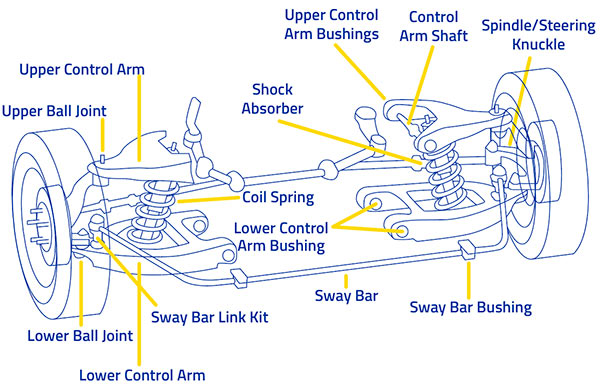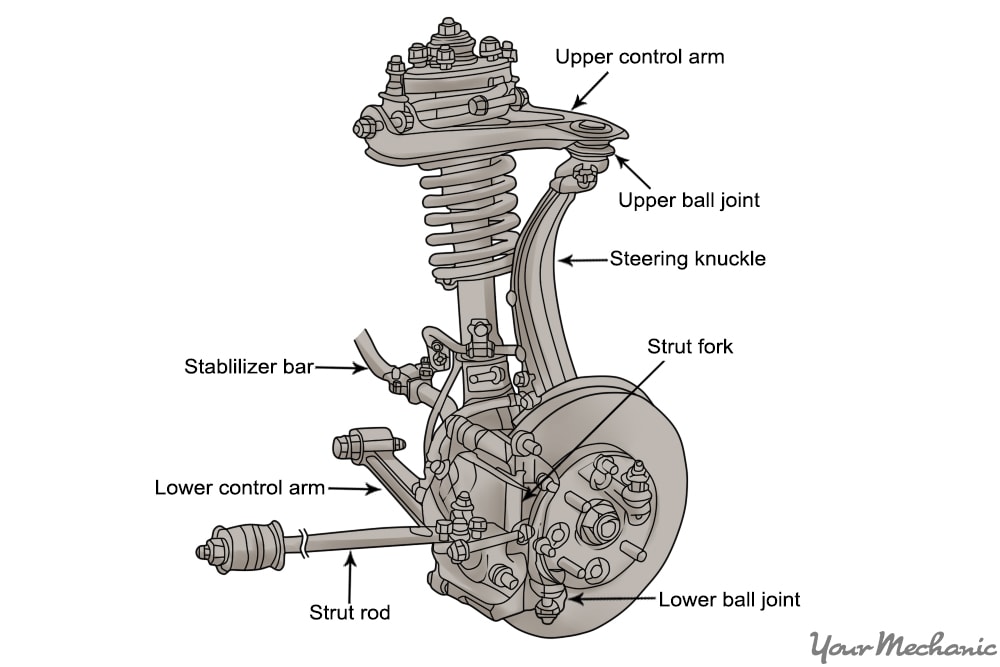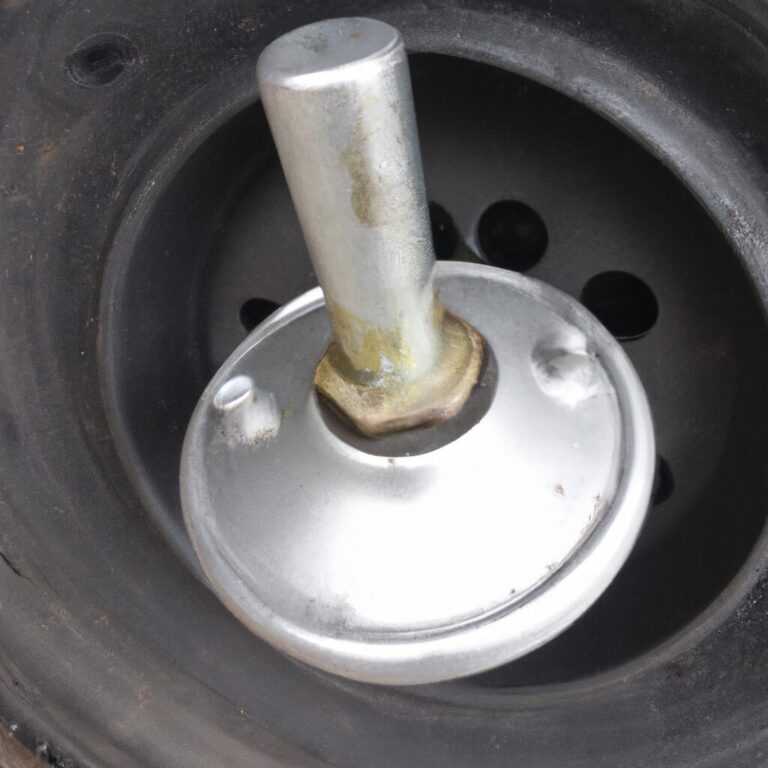How to Check Suspension Components
To check suspension components, visually inspect for wear, damage, leaks, and test for any abnormal noises or movements. Evaluating shocks, struts, bushings, and springs is essential for safety and performance.
Proper maintenance ensures optimal driving experience and vehicle longevity. Understanding the signs of worn suspension components will help proactively address issues and prevent potential hazards on the road. Regular inspections will help identify any necessary repairs or replacements to maintain a smooth and safe ride.
Take note of any unusual handling or noises while driving, as these could indicate underlying suspension issues that require attention. Prioritizing suspension checks contributes to overall vehicle safety and functionality.

Credit: www.moogparts.com
1. Visual Inspection
When it comes to maintaining your vehicle’s safety and performance, checking the suspension components is vital. A thorough visual inspection can help identify any potential issues before they escalate into major problems. In this article, we’ll go through the step-by-step process of visually inspecting your suspension components, starting with the tires and wheels, shock absorbers, and control arms.
Tires And Wheels
Begin the visual inspection by checking the tires for any signs of uneven wear, abnormal bulges, or cuts. Ensure that the tire pressure is at the manufacturer’s recommended level and examine the rims for damages.
Shock Absorbers
Inspect the shock absorbers for signs of leakage, damage, or excessive bouncing when pushing down on each corner of the vehicle. Worn-out shock absorbers can compromise the vehicle’s stability and lead to a bumpy ride.
Control Arms
Examine the control arms for any visible cracks, rust, or damage. Check the bushings for signs of wear and tear, as worn-out bushings can lead to noise, vibrations, and handling issues.
2. Functional Test
To check suspension components, perform functional tests by visually inspecting for any visible wear, damage, or leaks. Conduct a bounce test to evaluate the shock absorbers’ condition and a sway bar test to check for any excessive movement or looseness.
This helps ensure the proper functioning of the suspension system.
To ensure the suspension components are in good working condition, conducting a functional test is essential. This involves checking the overall performance of the suspension system through various tests.2.1 Bounce Test
One way to check the suspension is by performing the bounce test, which involves pressing down on each corner of the vehicle and observing how it responds.2.2 Steering Response Test
Another crucial test is the steering response test, where you should check how the vehicle reacts to steering inputs, ensuring it is smooth and responsive. During this test, pay attention to any abnormal noises or delayed reactions that could indicate issues with the suspension components. By conducting these functional tests, you can identify any potential problems with the suspension system early on, avoiding further damage and ensuring your vehicle’s safety on the road.3. Professional Inspection
In the process of checking suspension components, a professional inspection is crucial to ensure the safety and performance of your vehicle. A trained mechanic can identify potential issues that may go unnoticed during a visual inspection.
3.1 Signs Of Wear And Damage
During a professional inspection, the mechanic will look for visible signs of wear and damage on suspension components such as cracks, rust, or leaks.
3.2 Testing Suspension Components
The mechanic will also conduct tests to determine the condition of the suspension components, including checking for excessive play, fluid leaks, and unusual noises when the vehicle is in motion.

Credit: www.wikihow.com

Credit: www.yourmechanic.com
Frequently Asked Questions On How To Check Suspension Components
How Do You Diagnose Suspension Components?
To diagnose suspension components, start by visually inspecting for any signs of damage or wear. Then, check for any abnormal noises or vibrations while driving. Conduct a bounce test to determine if the shocks or struts are functioning properly. Finally, take the vehicle for a test drive to assess its handling and stability.
How Do You Visually Inspect A Suspension System?
Inspecting a suspension system visually involves checking components for damage, wear, and proper alignment. Look for signs of leaks, cracks, or loose parts. Ensure the suspension is level and that each part moves smoothly without excessive play or noise. Evaluate the condition of bushings, joints, and shocks to identify any issues.
How Do You Test A Suspension System?
To test a suspension system, push down on each corner of the car to check for bounce. Look for leaks or damage to the shocks and struts. Listen for unusual noises when driving over bumps. Pay attention to uneven tire wear.
Get a professional inspection if needed.
How Do You Check Suspension Arms?
Inspect suspension arms for signs of wear, damage, or looseness by visually examining them for cracks, bends, or excessive movement.
How Do I Know If My Suspension Components Are Worn Out?
To check if your suspension components are worn out, look for signs such as excessive bouncing, uneven tire wear, or a bumpy ride.
What Are The Common Suspension Components That Can Wear Out?
Common suspension components that can wear out include shocks or struts, ball joints, control arms, and sway bar links.
Can I Visually Inspect My Suspension Components?
Yes, you can visually inspect your suspension components for signs of damage, such as leaks, cracks, or excessive rust.
Conclusion
Checking suspension components is crucial for a smooth and safe driving experience. Regular inspections and maintenance can help prevent potential safety hazards and costly repairs down the road. By following the steps outlined in this post, you can ensure the longevity and performance of your vehicle’s suspension system.
Keep your car running smoothly and safely!

